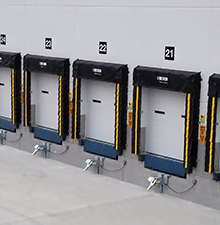Consumers’ Click & Buy Behaviours During Covid-19
April 6th, 2020Part 1 of this story looks at whether businesses are ready for the change in consumers’ purchasing patterns and what will this mean once the new normal sets in?
In December 2019, it was predicted that there would be 2.05 billion global digital buyers in 2020. This is 25% of the world’s population making up 15.5% of retail sales worldwide.
The number was expected to rise to 2.14 billion people in 2021 with retail sales rising up to 17.5% globally.
E-commerce was already expanding rapidly and becoming an integral part of consumers’ behaviour patterns. The convenience of purchasing items at the click of a button from the comfort of the home and waiting for deliveries to arrive was no longer a novelty, but a norm, or way of life for most people.
From small size items like fashion accessories to large bulky items like furniture, whatever the price, e-comm had it covered. Consumers had peace of mind when shopping with established brands directly or when using platforms like Lazada and Shopee. Consumers are even comfortable purchasing big ticket luxury items like designer bags and watches, and trust that it would get to them safety.
A survey conducted by KPMG in year 2017 found that online shoppers were motivated by these factors; round the clock availability, convenience, price point, ease of selection and as the only option to obtain something that was not available in their own country. The motivations are shown in the graph below:

Product category trends
In the same survey, KPMG found that in most countries, the most purchased items online are books & music, electronics and apparel.

Since the global outbreak of Covid-19, a new pattern of behaviour has emerged, shifting the product category demands drastically. Nielsen’s recent report found that consumers are stockpiling supplies in preparation of lockdowns or restricted movements and coined the term “pandemic pantries”.
Their investigation observed six consumer behaviour threshold levels that signal the spending patterns of people across multiple markets:
- Proactive health minded buying (purchasing preventative health and wellness products)

- Reactive health management (purchasing protective gear like masks and hand sanitisers)
In Malaysia, sales of hand sanitisers touched RM1millon in the last week of January, 800% above the weekly average. Whilst store shelves in Taiwan, China and Japan were sold out on bleach, hand sanitizer, toilet paper and cleaning pads.

- Pantry preparation (stockpiling groceries and household essentials)
In Vietnam, 45% of surveyed consumers say they’ve increased what they’re stocking at home, and 25% are buying more items online. In Taiwan, instant noodles have become a rarity in supermarkets.
In the US, the sale of packaged goods with stable shelf life such as oat milk has boomed over 300% in dollar value, and items like fruit snacks, pet medicine and dried beans has risen over 10% in a matter of weeks.
- Quarantine prep (experiencing shortages in stores, making fewer store visits)
An increase in online shopping as consumers prefer to stay away from stores, avoiding crowds and to keep their social distance.
- Restricted living (making much fewer shopping trips, limited online fulfilment)
As more people are home-bound, the demand for online shopping on essential items increases. This puts a strain on fulfilment capabilities especially when retailers are unprepared with limited stock in storage and cannot meet market demands.

- A new normal (return to daily routines, permanently altered supply chain)
People start to return to daily routines but there is heightened consciousness about health and hygiene. There is a long-term impact in supply chain and consumers’ shopping behaviours.
As consumers’ habits and buying patterns shift, business owners who are prepared have the opportunity to meet market demands, gain foothold over a bigger piece of the pie and earn customer loyalty along the way.
This trend is not limited to fulfilling daily essentials like fresh food and groceries. Physical store retailers will need to rethink their future business model once shopping habits of consumers shift when evaluating their purchase decisions. This could mean intensifying focus into e-comm infrastructure and enhancing customer experience through quick, transparent and trustworthy supply chain systems.

“People are gradually moving from offline shopping to online and the habit won’t disappear when the epidemic is over. This will have a very positive impact on the whole eCommerce industry,” Says Zhong Zhenshan, Vice-president of emerging technology research, IDC.
It’s time to get your business ready for the new normal and embrace new realities that will emerge for consumers post-pandemic season.
In Part 2 of this story, we look at solutions ideal for for E-commerce application.
References:
KPMG International (2017). The Truth About Online Consumers: 2017 Global Online Consumer Report https://home.kpmg/xx/en/home/insights/2017/01/the-truth-about-online-consumers.html
Law, T. (2019) 19 Powerful Statistics That Will Guide Your Strategy in 2020 https://www.oberlo.com/blog/ecommerce-statistics-guide-your-strategy
Meyer, S. (2020) Understanding the Covid-19 Effect on Online Shopping Behaviour https://www.bigcommerce.com/blog/covid-19-ecommerce/#changes-in-revenue-across-ecommerce
Nielsen Investigation: “Pandemic Pantries” Pressure Supply Chain Amid Covid-19 Fears https://www.nielsen.com/us/en/insights/article/2020/nielsen-investigation-pandemic-pantries-pressure-supply-chain-amidst-covid-19-fears/
By admin






